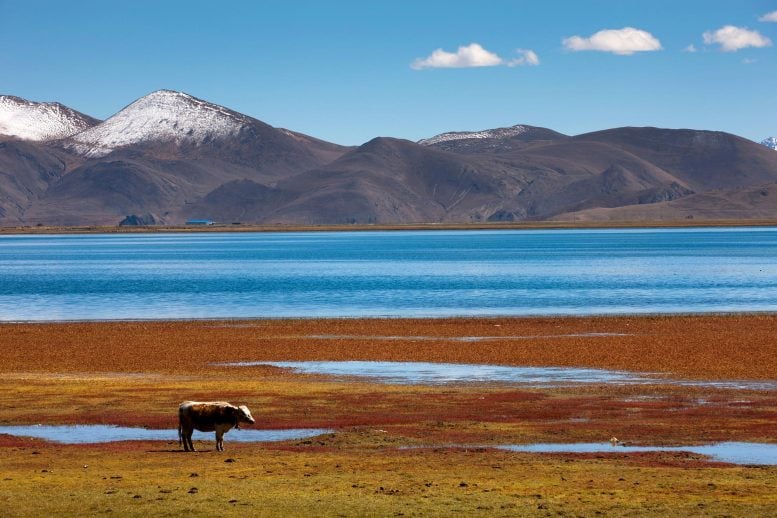
Rising Waters Transform the Tibetan Plateau Into an Unpredictable Future
-
by Anoop Singh
- 3

A study predicts significant expansion of Tibetan Plateau lakes by 2100 due to climate change, leading to major land loss and necessitating urgent environmental and economic adaptation strategies.
Increased rainfall and glacier meltwater are set to dramatically reverse the shrinking trend and expand land-locked lakes on the Tibetan Plateau by 50%.
This expansion will result in significant land loss, affecting agriculture, habitats, and infrastructure, and necessitating urgent adaptive strategies to mitigate economic, environmental, and ecological impacts.
Recent reports have stated that more than half the world’s largest lakes, including lakes in the Tibetan plateau, are drying up. However, a paper published today (May 27) in Nature Geoscience suggests that, by the end of this century, land-locked lakes on the Tibetan Plateau are set to increase exponentially, resulting in major land loss and related economic, environmental, and climatic impacts.
Climatic Influence on Lake Expansion
Climate and weather predictions suggest that increased rainfall due to climate change will enlarge these lakes, and see water levels rise by up to 10 meters.
The volume of water caught in these land-locked lakes is estimated to increase fourfold by 2100 according to the research by Dr. Iestyn Woolway of Bangor University (UK) and colleagues in China, Saudi Arabia, USA, and France.
Economic and Environmental Impact
The increased lake surface area will also mean the loss of critical land area, for agriculture, human habitation, critical road and rail networks, and economic disruption.
Dr. Woolway commented, “Climate change is making the Tibetan Plateau greener and more habitable, attracting more people to higher altitudes due to better access to water. However, rising lake levels require urgent planning and policies to mitigate impacts on the region’s ecology and population.”
Ecological and Climatic Ramifications
The resultant land loss could also lead to a change in the landscape, as lakes merge and the course of the rivers which feed and interconnect the lakes are altered.
This could lead to increased greenhouse gas emissions and a positive feedback loop, amplifying climate change. An increase in freshwater, and in flow between lakes could also cause a change in ecology and affect wildlife. As an example, when the Zonang Lake in Hoh Xil Nature Reserve burst its banks in 2011, the Tibetan Antelope found their migration route blocked.
Reference: “Widespread societal and ecological impacts from projected Tibetan Plateau lake expansion” 27 May 2024, Nature Geoscience.
DOI: 10.1038/s41561-024-01446-w
A study predicts significant expansion of Tibetan Plateau lakes by 2100 due to climate change, leading to major land loss and necessitating urgent environmental and economic adaptation strategies. Increased rainfall and glacier meltwater are set to dramatically reverse the shrinking trend and expand land-locked lakes on the Tibetan Plateau by 50%. This expansion will result…
A study predicts significant expansion of Tibetan Plateau lakes by 2100 due to climate change, leading to major land loss and necessitating urgent environmental and economic adaptation strategies. Increased rainfall and glacier meltwater are set to dramatically reverse the shrinking trend and expand land-locked lakes on the Tibetan Plateau by 50%. This expansion will result…
